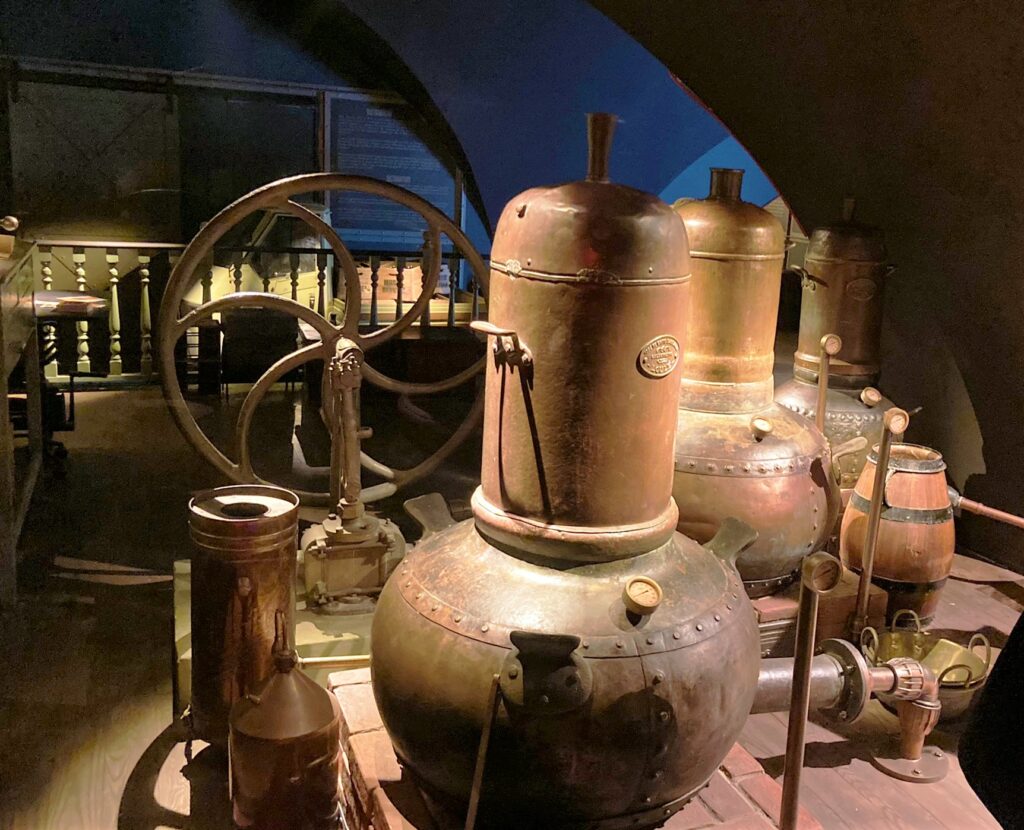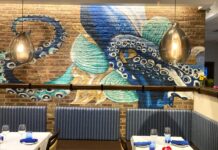 A diverse ecosystem will also be resilient, because it contains many species with overlapping ecological functions that can partially replace one another…in other words, the more complex the network is, the more complex its pattern of interconnections, the more resilient it will be.
A diverse ecosystem will also be resilient, because it contains many species with overlapping ecological functions that can partially replace one another…in other words, the more complex the network is, the more complex its pattern of interconnections, the more resilient it will be.
— Fritjof Capra, physicist and ecologist
The interwebz helpfully inform us that the opposite of mainstream is unorthodox—or alternative, marginal, fringe, unconventional and peripheral.
But we must turn to the Doobie Brothers for a critical corollary: “What were once vices are now habits.”
In its original usage from the 1600s, “mainstream” meant the principal current of a river. It wasn’t until the 1830s that the word was adapted to convey “prevailing direction in opinion and popular taste.”
Just as the mainstream of a river absorbs the volume of its tributaries, so popular taste is endlessly modified from the obscure fringe. Granted, unorthodox ideas might not become predominant, but they certainly bear palpable influence.
So, 46 years after New Albion planted a flag in California for a crazily different way of thinking about beer, has the result—we call it “craft” beer—become mainstream?
(By “craft” I’m sidestepping nuance and semantics and simply positing that a craft beer is one unlikely to be mistaken for Michelob Ultra any time soon.)
Most production and sales indices suggest the answer is no, not really. Craft beer may seem like the mainstream for those of us joyfully immersed in the movement’s flow, but a clear majority of Americans as yet prefer otherwise.
A half-century and thousands of subversive outlying breweries later, we’re up to 25% of the market nationwide, and maybe a tad more if like-minded imports are thrown into the mix. Some places the percentage is higher. Overall, and obviously, most Americans as yet have not seen the light because they prefer to drink the Lite.
Allow me to confirm that in spite of the many philosophical nits I enjoy picking, I’m enthusiastically and unreservedly in favor of 25% as opposed to .0025, primarily because craft beer’s market penetration has become sufficient to ensure an unprecedented level of choice in places like supermarkets, airports, sports ball venues and those more progressively inclined barber shops.
And, to me, the various beer wars we’ve fought for almost a half-century have always been about an expansion of choice. If you’re satisfied with High Life, no worries, but I favor diverse options and a panoply of flavor.
Depending on how one chooses to count, there are now more than 30 breweries in metro Louisville. Our local breweries are augmented by what might be referred to as “better” beer establishments, and we have a good number of those, too.
Package stores big and small offer numerous crafts and imports to go. Overall, there is a wider selection of beer for the choosing, located closer to where we live, than ever before.
This is optimal, because as the better beer market matures, specialization and differentiation come into play.
These terms suggest a calculated refinement and sharpening of business plans, which become possible (and arguably even necessary) once the basics of beer choice have been attained, and when there’s a critical mass of consumers who have gained the knowledge sufficient to conceptualize beyond the rudiments.
I believe that this process most often arises organically and spontaneously from beer businesses themselves, but it can also be shaped and directed amid a “free’” market which almost never is free, at least as regulatory realities pertain to alcoholic beverages.
As an analogy to explain differentiation and specialization in beer, consider Louisville restaurants.
We’re renowned for our food and dining scene, and deservedly so. Essential foodstuffs like steak, fish, barbecue and vegetarian fare are widely represented on area menus. Some eateries do breakfast, others dinner. We have budget diners and all-out white tablecloth restaurants.
Traditional international cuisines represented in Louisville include Mexican, French, Irish, Nigerian, Italian, Chinese, Scandinavian, Japanese, German, Caribbean, Thai, Bosnian and Indian—and I’m merely skimming the surface.
Most of us know what to expect when choosing where to eat, although popular taste being what it is, there’s probably some form of burger available at 95% of area restaurants, and yet this doesn’t mean they’re all burger joints.
My point is this: As with the diversity to be found in our restaurants, the Louisville metropolitan area stands to benefit from all sorts of better beer outlets, emphasizing the length and breadth of better beer, whether brewing their own beers or selling brews made by others.
The potential beer list variants verge pleasingly on the infinite. One might choose to emphasize locally-brewed crafts (many already do) or Bavarian wheat ales; session beers or high gravity sippers; pastry stouts or kettle sours; only hazy IPAs from Massachusetts; old-world German, Belgian or British beers; the entire product line of Against the Grain (at a SoIN bar) or Three Floyds (in NuLu).
That place? It does this. Those guys over there? They do that. Location, atmosphere and edibles are the grist for more differentiation. It makes me thirsty just thinking about it.
Of course, my ruminations should not be construed as directives. I’m daydreaming in a broad sense and hoeing my own row on a daily basis. There is no compulsion or airport food service mandates. Business owners may invest in better beer as they see fit.
Given the state of the world we live in, I find myself thinking quite a lot about resilience as stemming from complexity and diversity, and the way the beer mainstream is evolving as time passes. My own tastes have changed over four decades in beer, as well. Verily, if you weren’t around to experience the bad old days, it’s hard to put into words the extent to which Louisville metro’s beer scene has excelled in recent years.
And yet, just over the horizon resides the 75%. We need to keep peeling them away from flavorless commodity beer, and in the process, constantly reformatting the mainstream by offering expanded and principled options. This better beer dialectic is forever, and there’s no such thing as perfection, only process.
But you never stop trying, do you? Thanks to Louisville metro’s better beer purveyors for what they do.
Photo credits: Author’s collection, from the fun Museu da Cerveja in Lisbon, Portugal (2022).




















 Roger Baylor is an educator, entrepreneur and innovator with 40 years of hands-on experience and expertise as a beer seller, restaurateur and commentator. As the co-founder of New Albany’s Sportstime Pizza/Rich O’s Public House (which later became New Albanian Brewing Company) in the 1990s and early 2000s, Baylor played a seminal role in Louisville’s craft beer renaissance. Currently he is the beer director at Pints&union in New Albany and Common Haus Hall in Jeffersonville. Baylor’s “Hip Hops” columns on beer-related subjects have been a fixture in F&D since 2005, and he was named the magazine’s digital editor in 2019.
Roger Baylor is an educator, entrepreneur and innovator with 40 years of hands-on experience and expertise as a beer seller, restaurateur and commentator. As the co-founder of New Albany’s Sportstime Pizza/Rich O’s Public House (which later became New Albanian Brewing Company) in the 1990s and early 2000s, Baylor played a seminal role in Louisville’s craft beer renaissance. Currently he is the beer director at Pints&union in New Albany and Common Haus Hall in Jeffersonville. Baylor’s “Hip Hops” columns on beer-related subjects have been a fixture in F&D since 2005, and he was named the magazine’s digital editor in 2019.


